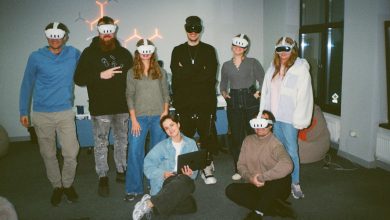As more immersive realities become increasingly viable, the metaverse beckons brands with sparkly opportunity. We have Tony Hawk skating into the metaverse, creating the largest ever virtual skate park. Even Coca-Cola is getting in on the action, with digital avatars and NFTs. The possibilities seem endless as we sit on the cusp of a dizzying precipice – still trying to define exactly what the metaverse means. But one thing’s for sure, it is only going to intensify the demands on data infrastructures, upping the ante on data management services.
Despite the hype, there are a few contextual factors that make the metaverse a good bet. With 5G rolling out, the potential for more immersive experiences is guaranteed unlike ever before – and 6G will be the icing on the cake. This is complemented in turn with progress made in edge computing and immersive devices. Meanwhile, we have a maturing market of digital natives – Gen Z are more open to and demanding of digital experiences than any other generation. The backdrop is ripe for innovation.
But there is a lot of hype, naturally, as there was when the internet was first invented in the 1970s. As brands scramble to seize an opportunity, the reality is that while the metaverse does exist – we don’t yet know what it will be. Could the first leaders in the innovation of the internet have imagined how it would come to be used today? This is undoubtedly the next iteration, or revolution. Similarly, it has the power to change the way we connect, communicate, live, work and play.
But what is it? The Metaverse is essentially a 3D elevation of the online world, based on a persistent network of 3D spaces and accessible in a variety of ways. It promises a more intuitive mode of communication and expression not currently possible with 2D digital interactions. But other definitions might include ‘a Web3 framework for economic interoperability’ or a ‘creative platform for experiences’.
Currently we are seeing lifestyle and leisure brands along with gaming platforms take the first steps – but brands across industries like manufacturing, healthcare and education are assessing the opportunity for disruption. In the first five months of 2022, more than $120 billion has been invested in building out metaverse technology and infrastructure. That’s more than double the $57 billion invested in all of 2021.
Rather than being carried away with the hype, an important step towards realising the exciting business potential at stake is to begin perfecting data and network optimisation. Now is the time to prepare the groundwork, ensure data management and infrastructure is slick – and that businesses have access to the tools and expertise needed to inch closer to a metaverse reality. With heavier workloads and smaller margins for error, there’s no time for down time.
Long-term mindsets are needed – this isn’t an investment opportunity for the next quarter. Thinking big and starting small with plenty of agile iterations is also key. While considering the why – what problem are you trying to solve? – businesses also need to consider the how. What skills and expertise do your business need to make a splash in this immersive world? What infrastructural support will you need and is it robust, transparent, or agile enough to handle the immense amount of data that comes with the metaverse?
A recent report by Credit Suisse suggests the metaverse will increase data usage 20 times over by 2032. Planning now for the data deluge, with iterative steps that reinforce digital strategies over the course of the next decade is vital. It means partnering with trusted technology partners to manage increasingly complex data environments, maintaining evolutionary progress inline with the latest industry developments.
We are at least 10 years away from metaverse becoming a reality, but with multiply hype cycles and industrial revolutions behind us we have plenty of insight to keep abreast of the opportunity whilst keeping it real. Building the metaverse is a marathon, not a sprint. Keeping one step in front of the other, with a clear digital strategy and a view on longer-term innovation is now vital.




